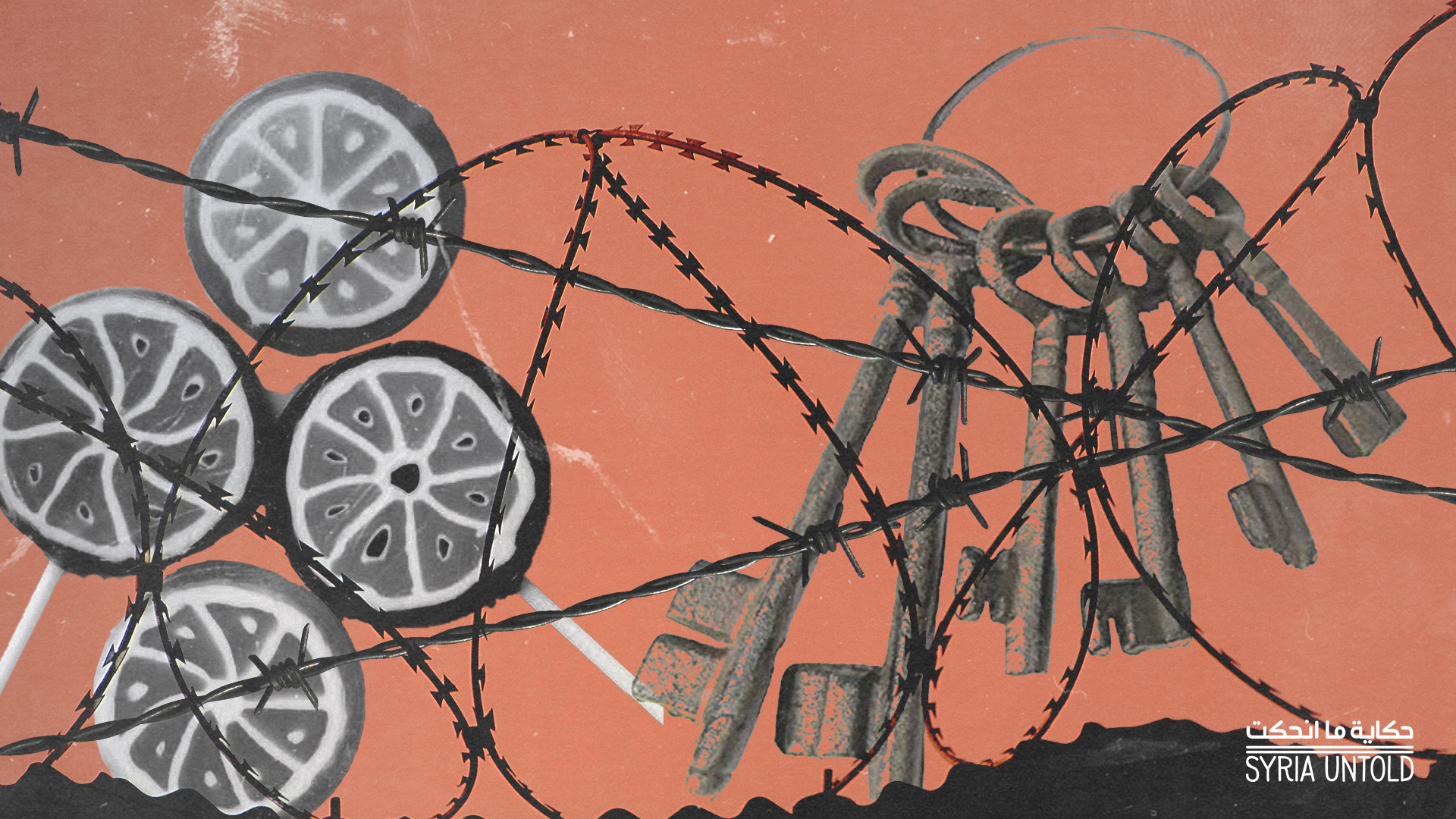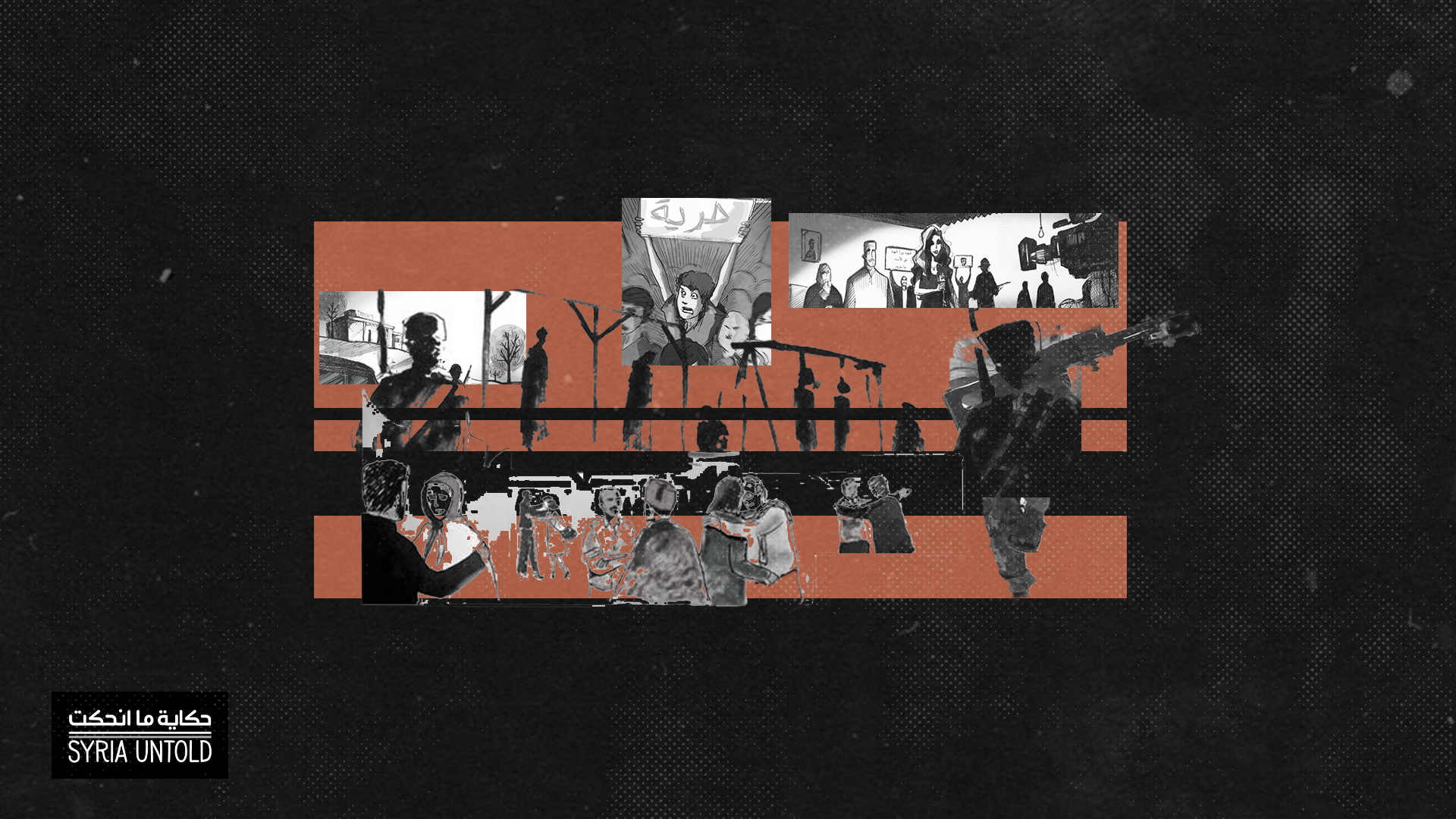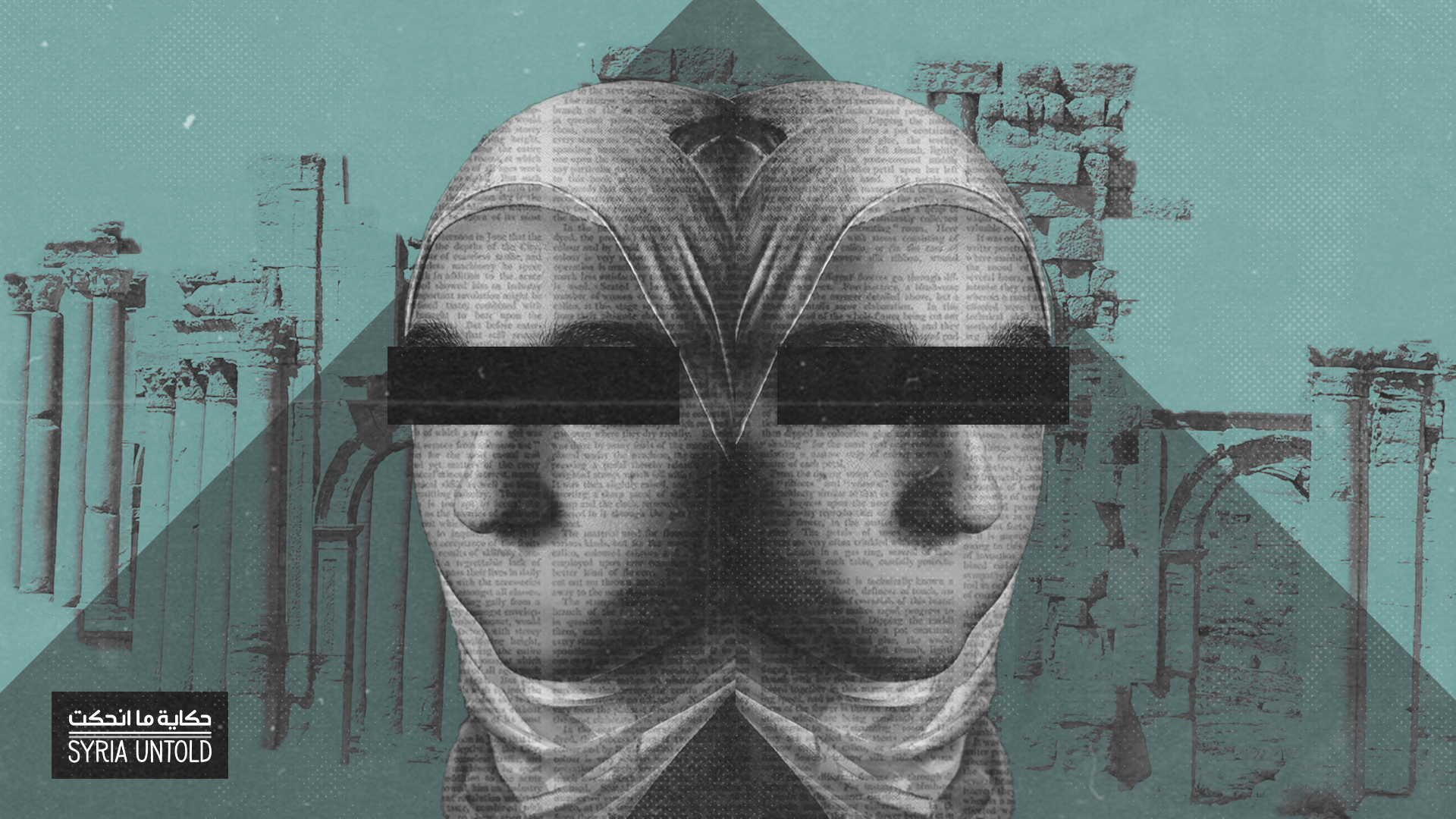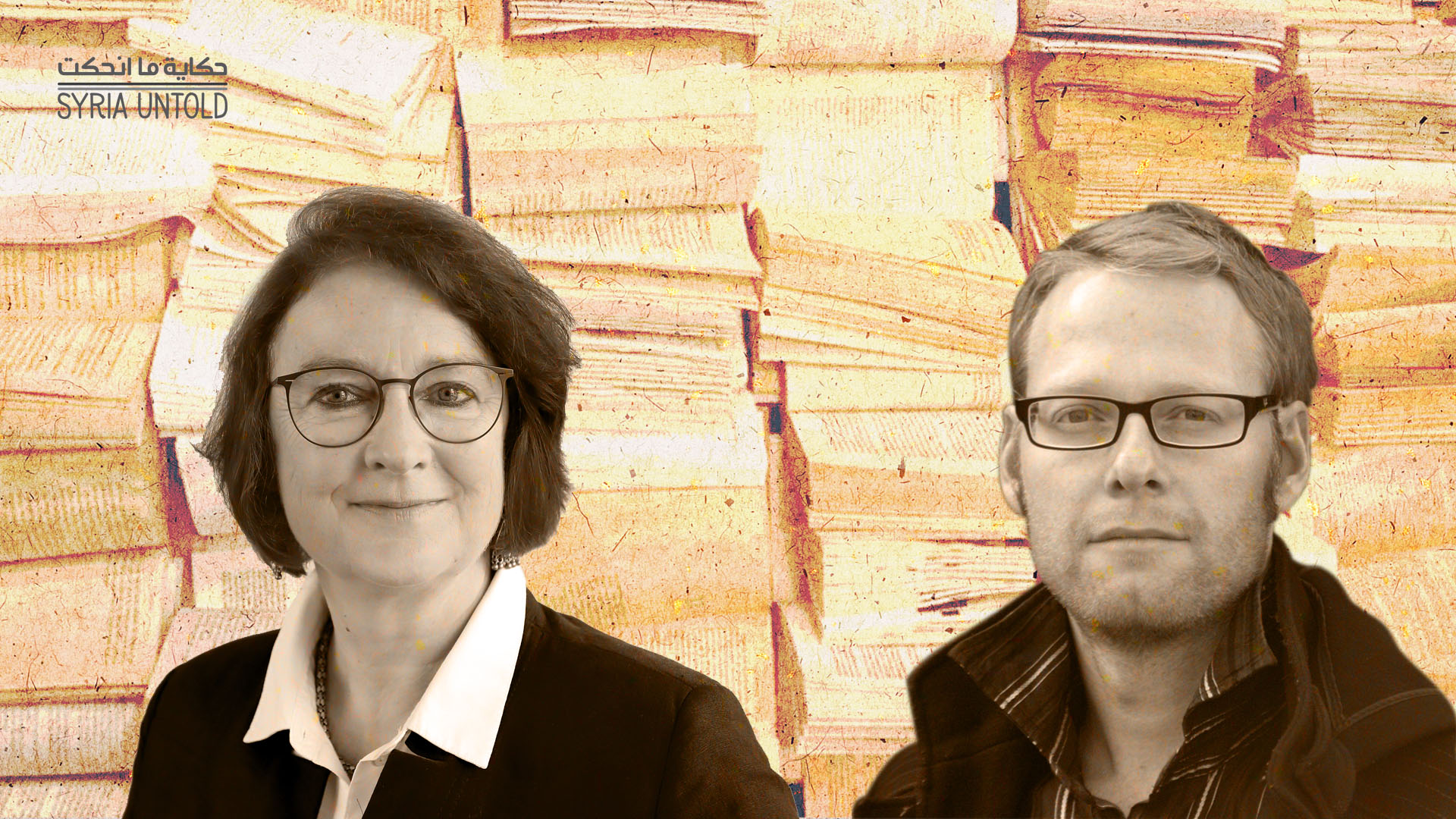Those of us born between the 1960s and 1990s knew nothing but what the state media wanted us to know. Official and state-affiliated media dominated our airwaves after the Baath Party seized power in 1963. The party declared emergency rule and subsequently shut down independent news outlets. The Syrian government would go on to monopolize the media landscape for the next half-century, becoming our patriarchal guardian and feeding us only those stories that we supposedly needed to know while blocking those that would provoke us to think.
I remember my own shock when, at the age of 20, I accidentally accessed a blocked website to read about the Damascus Spring movement after the death of Hafez al-Assad. The website detailed how the Syrian government arbitrarily detained dissidents.
Some 225 websites were reported blocked in the first half of 2009 alone. By the eve of the uprising in 2011, media suppression hit its peak, with Syria ranking 176th of the 179 countries in the annual World Press Freedom Index published by Reporters Without Borders.
But that same year, in 2011, a new term began to circulate in Syria: alternative media. As the uprising took hold, this was the term that Syrians used to describe the individual and grassroots initiatives that emerged to tell the unfolding story of that popular movement. And before long, these alternative media would evolve into professional news platforms. By 2014, there were more than 250 such publications and media outlets, according to research by CFI, a French media development agency.
For the first time in decades, Syrians could access uncensored, diverse and independent information.
Alternative media became truly present in people’s everyday lives. I visited a cafe in Raqqa in summer 2013, after opposition forces captured the city. I remember the dozens of copies of independent publications stacked on the cafe tables, as customers read them freely.
A decade on, how can we work to free Syria’s detainees?
16 April 2021
A decade of Syrian comics
13 August 2021
Today, 11 years since the March 2011 protests that became the Syrian uprising, the initial success of many of those alternative media outlets has seemed to dim amid pressures from more powerful forces. Sometimes, to great disappointment, those pressures have come from within the alternative media landscape itself. One recent incident I remember is from 2020, when the pro-opposition Aleppo Media Union fired journalist Yaqeen Bedo for a comment she made that they saw as “insulting the revolutionary media.”
The firing came as part of a seemingly larger trend. Some 42 percent of Syrian journalists believe that the alternative media has a negative effect on the Syrian conflict, according to a 2019 survey by Enab Baladi (itself an alternative newspaper founded in the wake of the uprising in 2011), while 33 percent of the journalists surveyed saw its effect as positive and 33 percent said there was no effect at all. These results weren’t far off from those of a public poll Enab Baladi posted on its Facebook page that asked: “How did the alternative Syrian media affect the conflict?” Some 29 percent of respondents said there was a positive effect, while 49 percent said the effect was negative. Another 25 percent responded that such media didn’t affect the conflict.
It is frustrating to see such results and opinions despite all the sacrifices Syrians made to broadcast the war and report their daily pain for years. After all, Syria has lost more than 130 journalists since 2011, according to the Committee to Protect Journalists. Hundreds are still missing, hiding away in prisons run by the regime and different armed groups.
How did we get here?
A dangerous landscape
Syria is among the most dangerous places for journalists in the world. There are few safeguards to protect journalists, or institutions to fight for their rights. And above that, all of the authorities controlling Syria—whether the regime or today’s constellation of opposition groups—feel threatened by the free press.
Between March 2011 and 2021, the Syrian Centre for Media and Freedom of Expression, an NGO, documented 1,353 violations against journalists in Syria. The regime came in first as the main perpetrator throughout the past decade, then the Islamic State, followed by the hardline Islamist group Hay’at Tahrir al-Sham (HTS), the rebels and finally the Democratic Union Party (PYD), the ruling party in northeastern Syria, which has the fewest number of violations, at 99.
Perhaps the biggest lie of all since the uprising is the story surrounding the killing of Ibrahim Qashoush.
The most effective alternative media outlets were often attacked the most harshly—and not just by the Assad regime. One pioneering publication that launched in 2011, Rising For Freedom, was shut down in 2017 by Jaish al-Islam, an Islamist rebel coalition outside Damascus. The platform had published an article that Jaish al-Islam accused of being blasphemous. The group then issued arrest warrants against journalists working for the publication and ordered employees not to enter northern Syria when regime forces recaptured the Damascus suburbs in 2018, forcibly displacing tens of thousands of residents to the rebel-held north.
Radio Fresh FM is an independent radio station that was founded in 2013 in northwestern Syria’s Kafranbel by the late journalist and activist Raed Al Fares. HTS, which controls much of northwestern Syria, harrassed the radio station often for employing female broadcasters, playing music and taking a critical stance against both the Assad regime and Islamist authorities.
To keep the station running, Raed came up with the idea of lowering the pitch of the female broadcasters to sound masculine. He also replaced the tunes between each news item with animal sounds. Radio listeners would hear news of an attack in a nearby area, followed by the squawking of a crow before the next news item aired.
Fares was later assassinated in 2018; activists largely blamed HTS for the killing.
‘Palmyra syndrome’: What are Syrians allowed to speak about amid war and revolution?
02 April 2021
What did exile change in our narratives?
26 January 2021
The capacity and effect of those independent outlets also varied from one area to another. There were significant discrepancies between the funding, training workshops and other support offered by international organizations. Before the city’s recapture by regime forces in late 2016, Aleppo was the main target for most of the media-related international funding, while very few grants were given to journalists in Deir al-Zor and Daraa.
Women faced even more difficulties. Their travel was often limited, either because they had no passports or because they needed male guardians to travel with them in certain areas. Many women who wanted to attend training workshops in Turkey, for example, were left behind, as they couldn’t travel. It was hardly surprising that all the workshops I conducted for female journalists inside Syria were packed with students, while the men’s ones were almost never filled up completely.
Amid all this, the international media treated local Syrian journalists poorly. Syrian journalists were not provided insurance, very few were given relocation funding when needed and many were left alone without contact or follow-up in dangerous situations.
A widening gap, and facts swept under the rug
Much of Syrian alternative media has become a war media that is oriented toward covering violence, victory propaganda and elites, while peace journalism is oriented towards conflict solution, truth and people.
Furthermore, there is an ever-expanding gap that has separated some Syrian media activists from the public. After being appreciated for reporting on the demonstrations and attacks on peaceful protesters in 2011 and 2012, things changed in the public attitude toward these activists.
As they started to work for professional media outlets and, oftentimes, receive salaries in US dollars, a new privileged class surfaced among them. Other Syrians meanwhile still received their salaries in the crumbling Syrian lira.
Alongside the class tensions, some people started accusing media activists of being “responsible” for the bombings. If a journalist filmed in an area that got bombed by the regime two days later, the attack “was because of him,” some people reasoned.
Meanwhile, the freedom of expression that was enjoyed by the anti-regime movement started to fade in 2012 as the conflict morphed into something more militarized.
That year, I filed a report for the BBC about the factions fighting the regime despite their ideological differences. The report showed that Jabhat al-Nusra, an Islamist faction, was present in Idlib. Some activists accused me of being “financed by British intelligence,” or that my report was somehow responsible for stopping NATO from imposing a no-fly zone.
Much of Syrian alternative media has become a war media that is oriented toward covering violence, victory propaganda and elites.
The online attacks against me were so severe that I had to seek protection from a local Free Syrian Army group, who helped me get out of Syria. Paradoxically, the leader of this FSA group, the late Basil Issa, was among those whom I included in my report. We discussed my reporting, and to my surprise, he did not object to it. “The media’s role is to annoy us," he told me.
By 2013, it seemed that Syrian media retreated to the same old patterns of sweeping dirty facts under the rug. Covering up the violations of “our comrades” became somewhat of a norm. There are many examples, like the multiple indiscriminate attacks that the rebels in eastern Aleppo and Latakia carried out on civilian villages with “Hellfire” missiles, and the numerous thefts carried out by the Free Army factions, which were not reported until Al-Nusra used this justification to attack and eliminate those groups. There was the unclaimed, deadly attack on a bus convoy transporting civilians from the encircled, largely pro-regime town of al-Fuaa in Idlib as part of a 2017 evacuation deal. The list goes on.
Perhaps the biggest lie of all since the uprising is the story surrounding the killing of Ibrahim Qashoush. A security guard, Qashoush was murdered in Hama in 2011 by rebels who believed he was a regime informer. To hide this crime, media activists reportedly decided to film Qashoush claiming that he was an opposition demonstrator killed by the Assad regime. The lie developed further, as local and international media reported that Qashoush was the man behind Hama's iconic protest chants and the leader of mass demonstrations in the city.
Qashoush, of course, was neither of those things: the real singer was a man named Abdulrahman al-Farhoud. But Farhoud’s attempts to tell his own story gained little traction, and the fiction surrounding Qashoush took hold.
With the Qashoush story and many others that came after, a new layer of suppression grew out of the fear of facing character assassination, isolation or systematic bullying for speaking against the dominant current.
This spread of populism—and the costly price of challenging it—harmed freedom of expression, pushing independent journalists who covered unpopular opinions to step aside. Diversity was lost, and somewhere along the way our social media bubbles turned into thick walls.
Of course, the past decade has seen Syrian alternative media and journalists become the main source of information for what is happening in their country. Syrian journalists live-streamed their pain, their struggles and their experiences of the countless crimes committed against them to the world. It is largely thanks to them that the international community knows so much of what has happened in Syria over the course of the war.
For that and other sacrifices made for the freedom of our media, it would be a great loss if we don’t challenge the new suppressive systems. We must give the marginalized, diverse voices real platforms again. That is the only hope for our alternative media to progress toward what we dreamed of in 2011.








